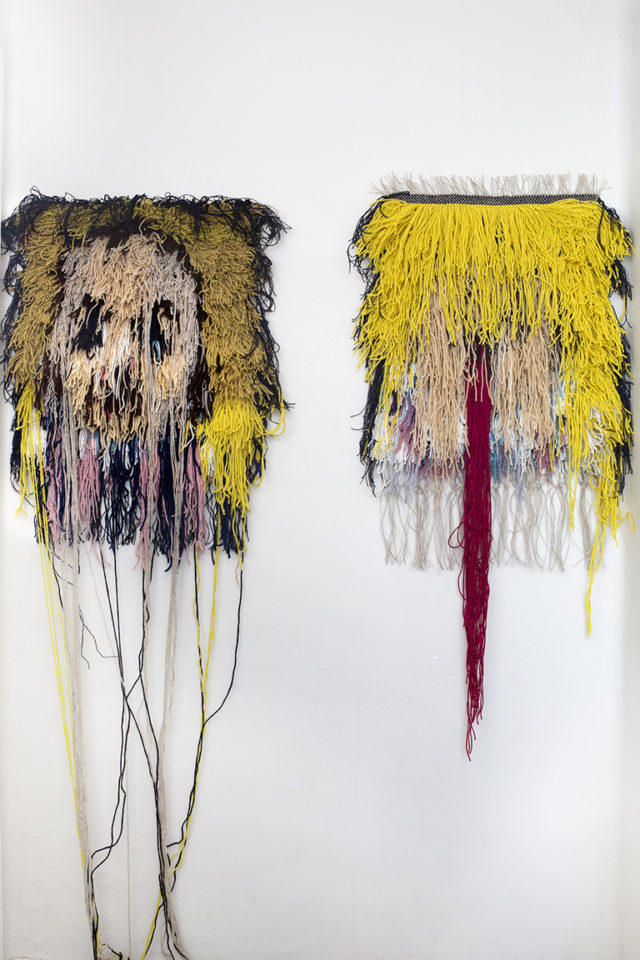Emelie Röndahl
—When Emelie Röndahl started with rya weaving as her main practice, she did it based on a kind of visual desire. She was drawn to states like hairy strategies, broken or crying pixels and glitches, images that do not hold together, and that do not sit well. She saw a potential in the rya technique to fulfill these desires.
Digital pixels are grateful models for woven pixels. They are easily transferred visually through their common square shape. At the front, the rya knot hangs out freely with the two open ends. This is what she usually call her crying pixel. This term points out something about the narratives in Röndahl’s woven images, where sorrow, sadness and the relationship to the digital and the more insensitive are brought together.
The pixels act as a guide in the weaving itself, but they also have a different inherent value, namely that they have already existed in a different form before they were woven. They have been reproduced and their significance in the first context has changed. The meaning is multiplied by new layers by the woven work and by the material. Images exist on the internet in incomprehensible numbers. Woven pieces in the physical world do not.
Emelie Röndahl (1982), is a weaving artist and currently a doctoral student in arts and crafts at HDK-Valand, where she also took her Master’s degree in 2012. Röndahl has exhibited several times in both Sweden and internationally, most recently the Istanbul Design Biennale 2018, Young Swedish Form 2019, Lodz Tapestry Triennal 2019-2020 and Rian Design Museum 2020. She has also participated in many artist residencies, including Iaspis in Stockholm 2013-2014 and Textile Arts Center in New York 2014-2015, and Iaspis’ guest studio Nova Iskra in Belgrade 2018.




